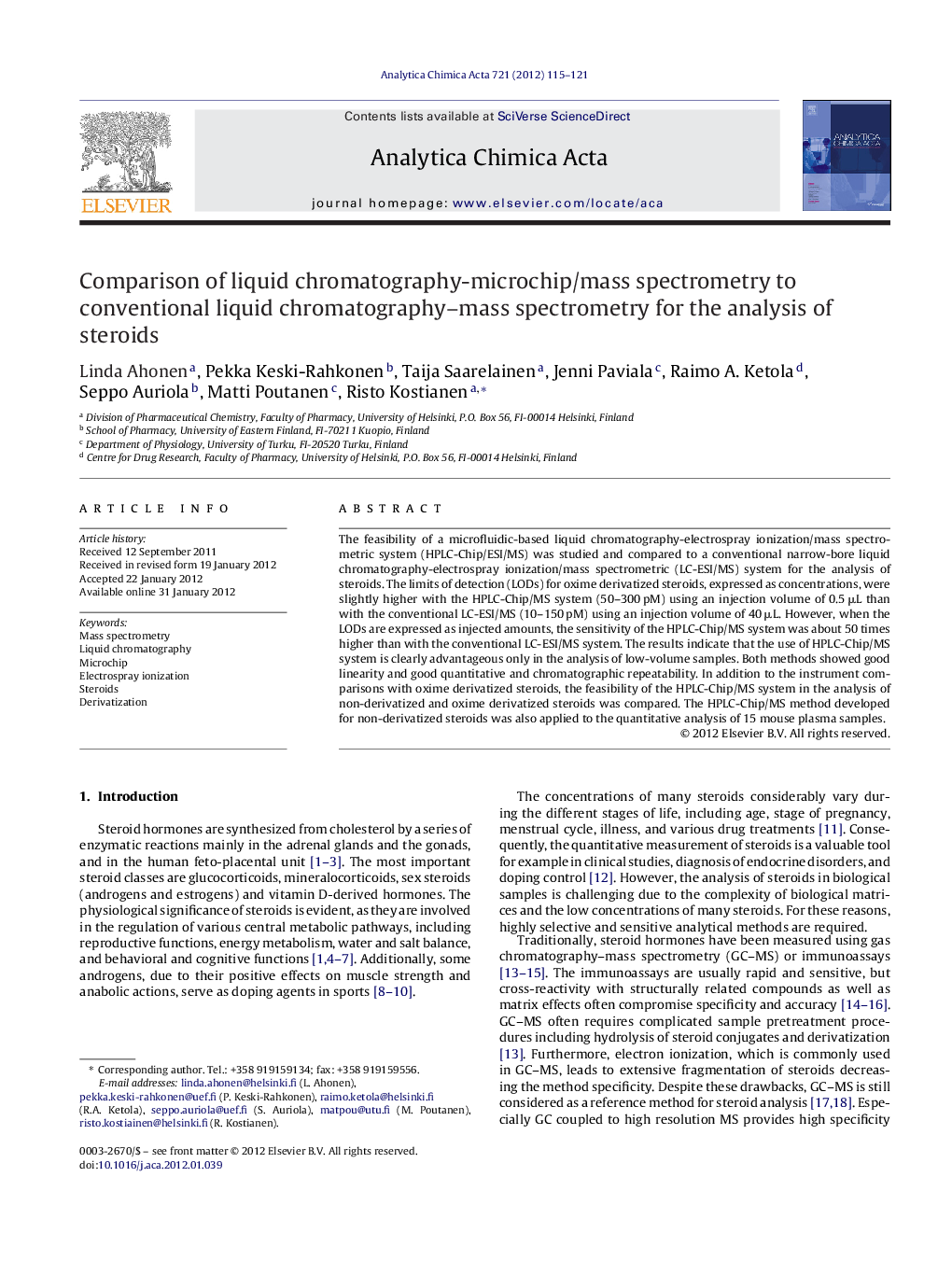| Article ID | Journal | Published Year | Pages | File Type |
|---|---|---|---|---|
| 1166263 | Analytica Chimica Acta | 2012 | 7 Pages |
The feasibility of a microfluidic-based liquid chromatography-electrospray ionization/mass spectrometric system (HPLC-Chip/ESI/MS) was studied and compared to a conventional narrow-bore liquid chromatography-electrospray ionization/mass spectrometric (LC-ESI/MS) system for the analysis of steroids. The limits of detection (LODs) for oxime derivatized steroids, expressed as concentrations, were slightly higher with the HPLC-Chip/MS system (50–300 pM) using an injection volume of 0.5 μL than with the conventional LC-ESI/MS (10–150 pM) using an injection volume of 40 μL. However, when the LODs are expressed as injected amounts, the sensitivity of the HPLC-Chip/MS system was about 50 times higher than with the conventional LC-ESI/MS system. The results indicate that the use of HPLC-Chip/MS system is clearly advantageous only in the analysis of low-volume samples. Both methods showed good linearity and good quantitative and chromatographic repeatability. In addition to the instrument comparisons with oxime derivatized steroids, the feasibility of the HPLC-Chip/MS system in the analysis of non-derivatized and oxime derivatized steroids was compared. The HPLC-Chip/MS method developed for non-derivatized steroids was also applied to the quantitative analysis of 15 mouse plasma samples.
Graphical abstractFigure optionsDownload full-size imageDownload as PowerPoint slideHighlights►Comparison of a HPLC-Chip/MS system to a conventional LC–MS system. ► LODs for oxime-derivatized steroids slightly lower with the HPLC-Chip/MS system. ► Both methods show good linearity, quantitative performance, and repeatability. ► Development of a HPLC-Chip/MS method for analyzing non-derivatized steroids.
